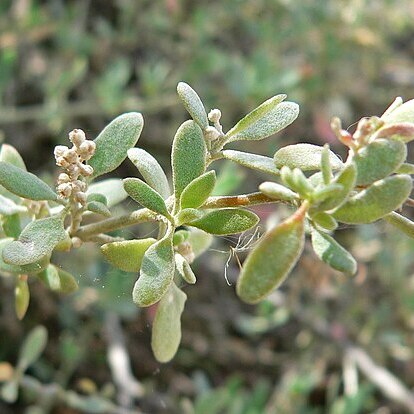Fls small, axillary to terminal, perfect or unisexual, in ebracteate clusters arranged in spikes or racemes. Per. 5-partite, not or very slightly enlarging in fr.; stamens 5-0; filaments flattened; ovary subglobose, ± depressed; styles 1-(3). Fr. a ± globose berry, free from per.; seed horizontal, embryo annular, endosperm cop. Shrubs, sub-shrubs, or herbs with alt. or opp. lvs. About 12 spp. in Australia and 1 in N.Z.

